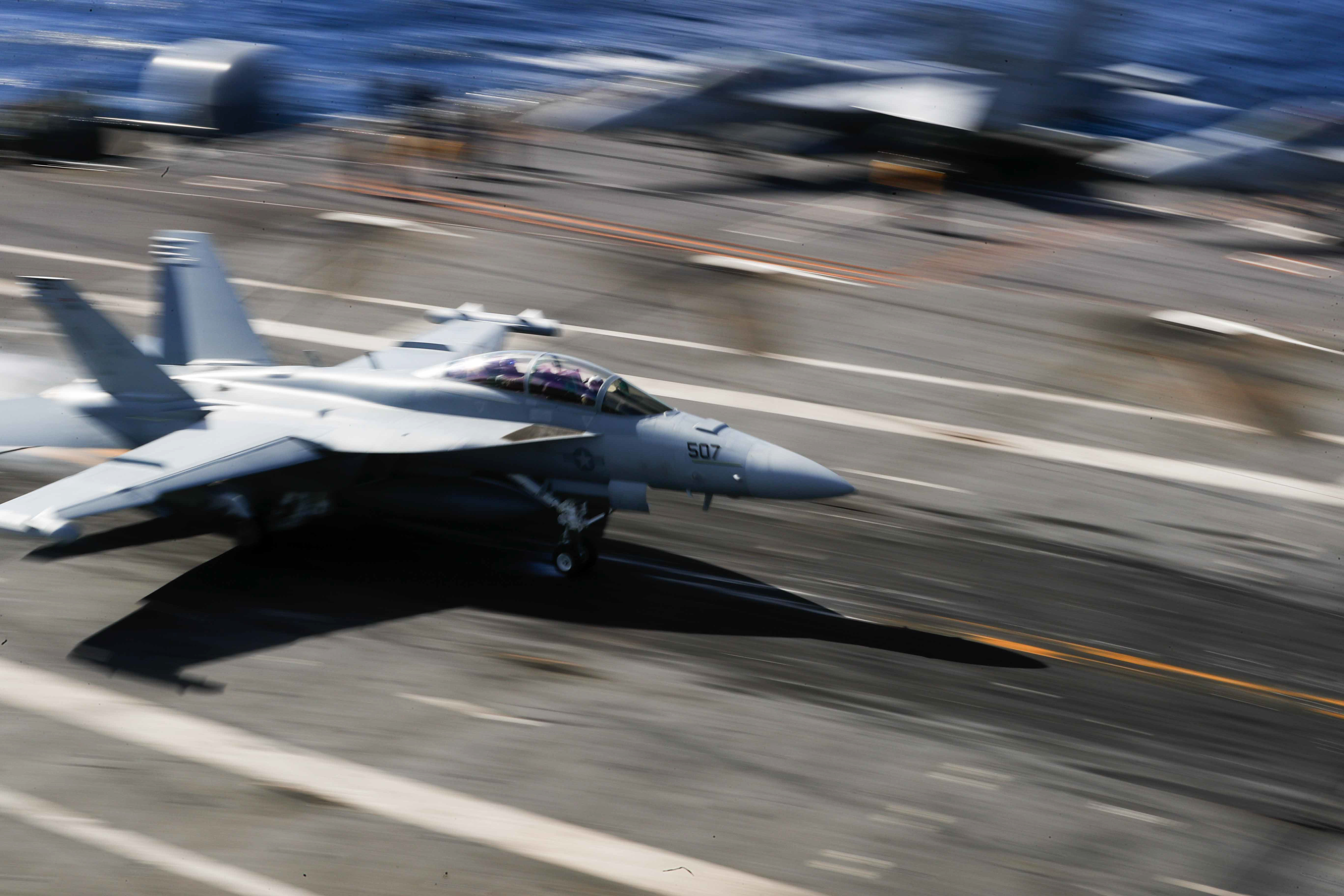
An F/A-18F Super Hornet assigned to the “Gladiators” of Strike Fighter Squadron (VFA) 106 lands on the flight deck of the Nimitz-class carrier USS Abraham Lincoln (CVN-72). US Navy Photo
ST. LOUIS, Mo. — The first F/A-18F that will have its service life extended beyond 6,000 flight hours arrived at Boeing on Thursday.
The Super Hornet from Naval Air Station Oceania, Va. flew to Boeing’s newly developed service life modification line in Missouri to start a process that will add 3,000 more hours to aircraft, Dan Gillian, Boeing’s head of Super Hornet and EA-18G Growler programs, told reporters on Thursday.
Faced with a looming strike fighter shortfall, the Navy and Boeing began work in 2009 to extend the life of the aircraft first introduced into the fleet in 1999.
“The initial airplanes will go from 6,000 [hours] to 7,500 hours and then from 7,500 to 9,000,” Gillian said.
“Initial airplanes will take 18 months and we’ll work that down to 12 months, that’s the rate we have to get to.”
Eventually, Boeing will work to perform life extensions on 40 to 50 Super Hornets a year split between its line in St. Louis and a second ine in San Antonio, Texas.
“We want to bring the hardest jets here. We’ll do the hard stuff here and we’ll replicate at scale down in San Antonio,” he said.
“Initially, the first six airplanes will come to St. Louis and the seventh will go to San Antonio and then we’ll start alternating.”
Key to the program will be the lessons of a recently completed Service Life Assessment Program (SLAP) in which Boeing tore down two high-hour Super Hornets to map out the modifications needed to extend the service life. The SLAP was borne from the Navy’s experience from the F/A-18 A-D Hornet life extension program that was focused on replacing the center barrel of the airframe. Depots performing the work found unexpected problems unique to each Hornet that required more time to remedy and played havoc with delivery schedules.
Gillian said the new program would be executed differently.
“It’s not like the legacy Hornet where we had the center barrel replacement program. This is more a bit more like spots around the airplane need to be tweaked and adjusted,” he said.
As the program evolves, the service is set to upgrade the current Block II Super Hornets with new data links, conformal fuel tanks and upgraded avionics to a Block III configuration.
“Block III will get introduced into production in 2020 in 2022 we’ll start doing Block II to III conversions. The Navy’s vision is to convert all Block II Super Hornets into Block III Super Hornets,” Gillian said.
“The service life modification, starting at about 2022 will take Block II Super Hornets and convert them into Block III Super Hornets.”
